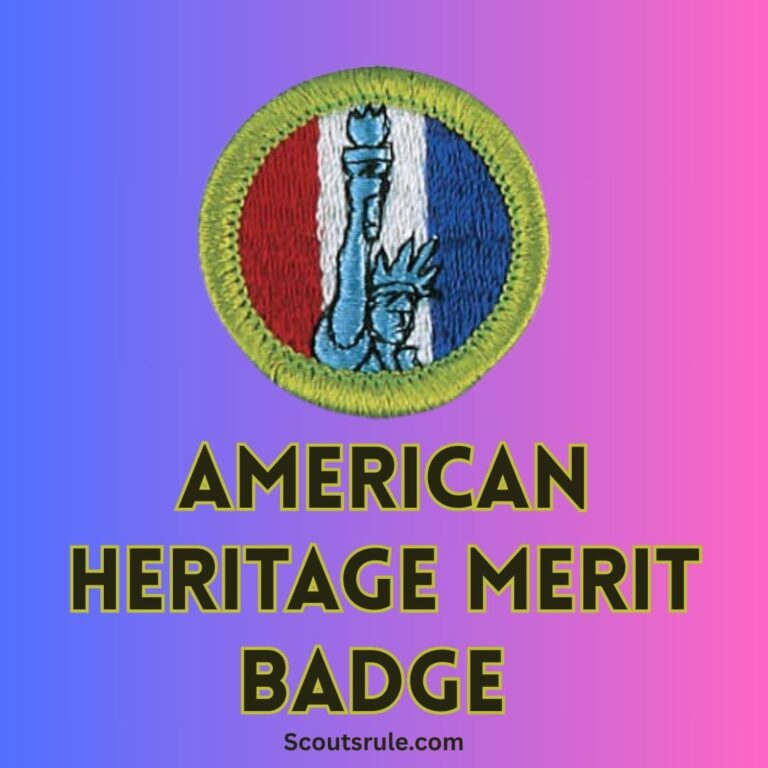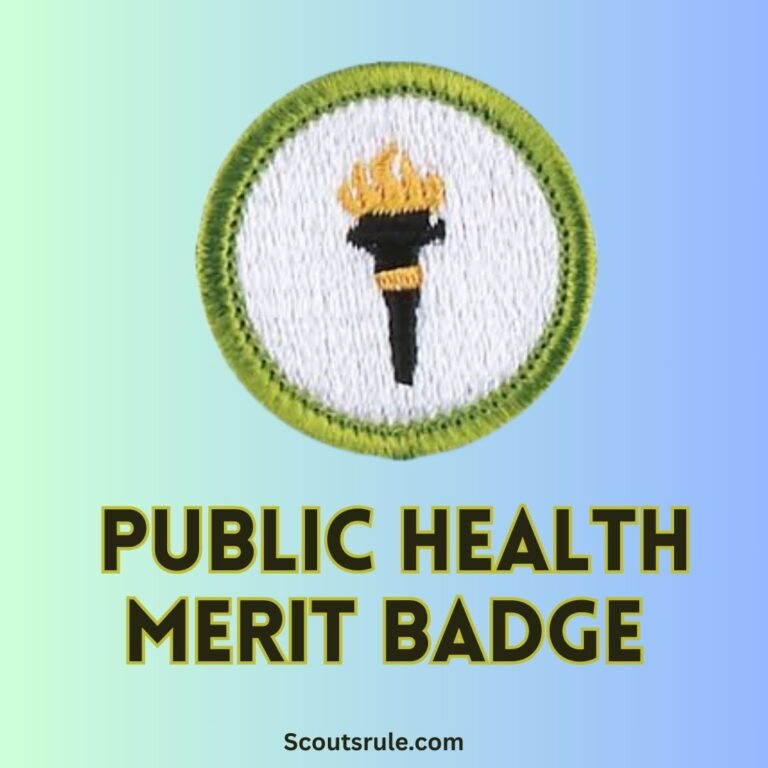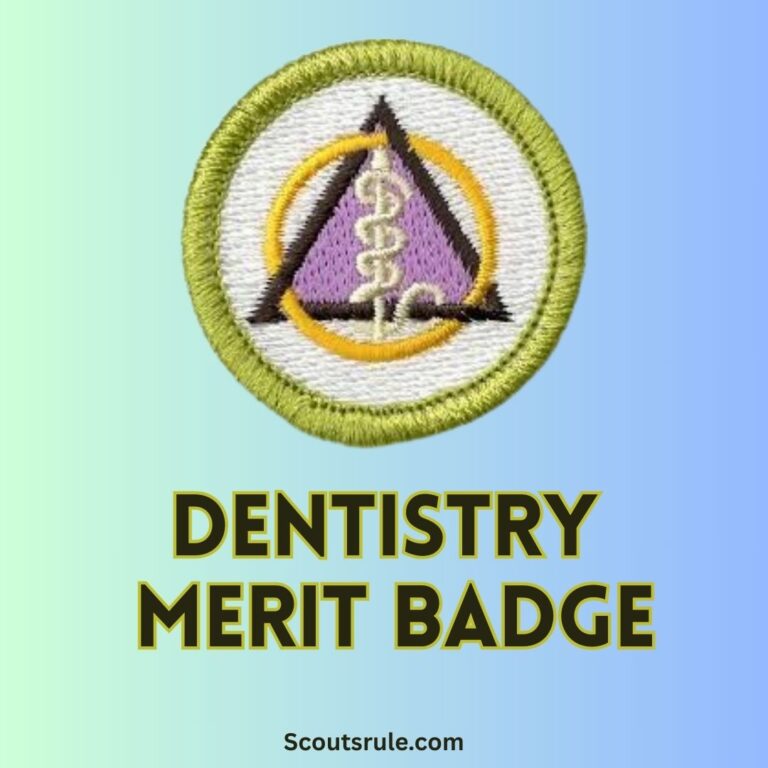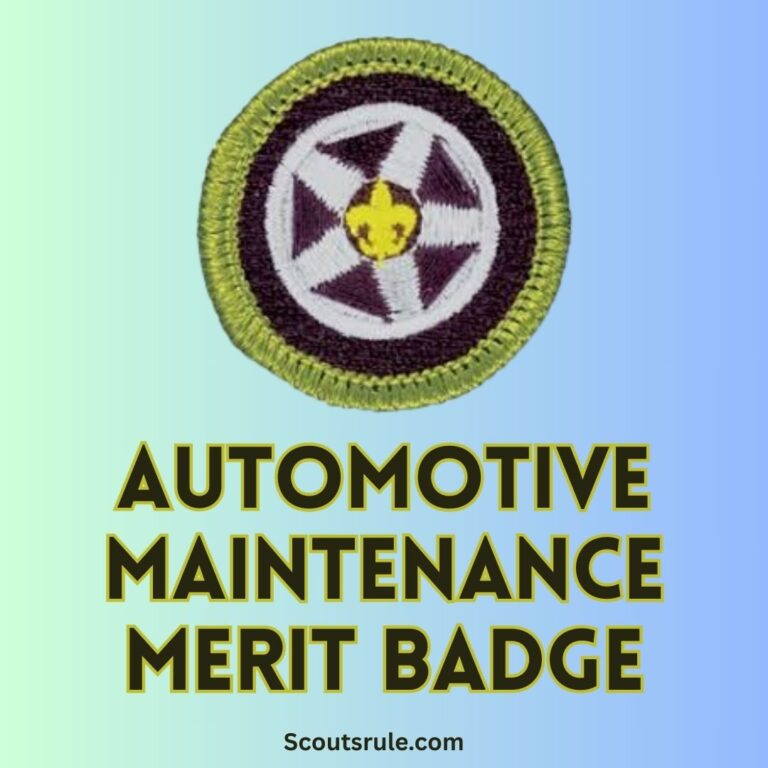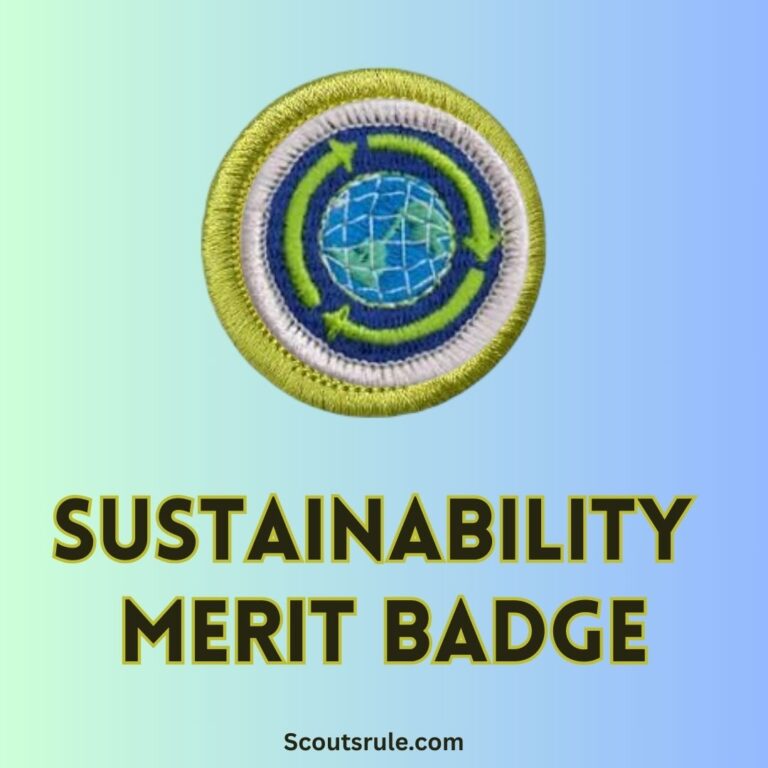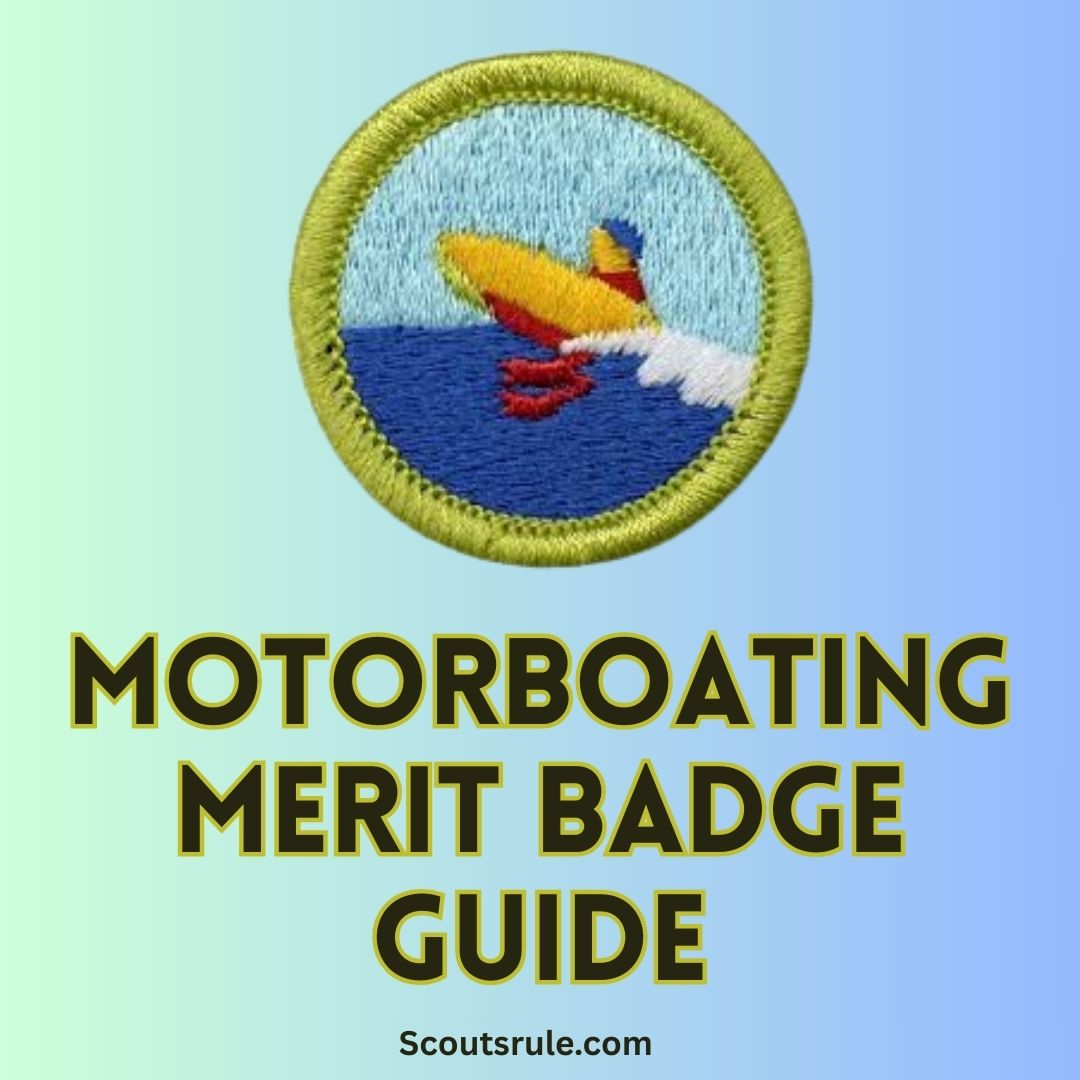
This guide is intended to serve as an in‑depth study aid and project planner to help you understand the requirements of the badge, master essential motorboating skills, and develop safe practices when operating a motorboat. Remember that this guide is a supplement to the official Boy Scouts of America merit badge pamphlet—so always refer to the latest official requirements and work closely with your merit badge counselor to ensure your work meets local council standards.
Post Contents
- Introduction: The Role and Appeal of Motorboating
- 2. Purpose and Objectives of the Motorboating Merit Badge
- 3. Overview of the Requirements
- 4. Detailed Safety Practices and First-Aid Procedures
- 5. Motorboat Components and Operating Techniques
- 6. Practical Projects and Hands‑On Activities
- 7. Documentation, Record Keeping, and Presentation Strategies
- 8. Additional Tips, Resources, and Career Connections
- 9. Conclusion: Building Lifelong Skills Through Motorboating
Introduction: The Role and Appeal of Motorboating
Motorboating has long been a popular pursuit for those who love the outdoors and the thrill of operating complex machinery in a dynamic environment. Whether used for leisure, competition, or transportation, motorboats represent an intersection between mechanical ingenuity and maritime adventure. Earning the Motorboating Merit Badge offers you a chance to learn about various types of motorboats, the principles behind their operation, safety protocols on the water, and proper maintenance practices. It is an opportunity to develop self‑reliance, teamwork, and problem-solving skills—all while enjoying time on the water.
2. Purpose and Objectives of the Motorboating Merit Badge
The Motorboating Merit Badge is designed to help you:
- Learn Safety Protocols: Understand the hazards inherent in motorboating—such as flammable fuels, carbon monoxide emissions, propeller risks, collisions, and falls overboard—and learn techniques to prevent, mitigate, and respond to these hazards.
- Acquire Practical Skills: Gain hands‑on experience operating a motorboat safely. Develop competence in starting motors, steering and controlling speed, and performing basic maintenance tasks.
- Understand Different Motor Types: Recognize the differences between inboard, outboard, and inboard/outboard motors. Learn about engine servicing, fuel handling, and proper winterization procedures.
- Emphasize Water Safety: Complete the required swimmer test, learn about personal flotation devices (PFDs), and study safe practices for swimmers and boat passengers.
- Develop Navigational and Operational Knowledge: Learn the nautical rules of the road, aids to navigation, the use of lights and sounds on the water, and proper anchoring techniques.
- Promote Responsible Behavior: Embrace safety and responsibility as essential components of motorboating, ensuring reliable operation, reducing the risk of injury, and protecting the environment.
By achieving these objectives, you build a foundation not only in motorboating skills but also in overall responsibility and safety that applies both on and off the water.
3. Overview of the Requirements
While exact phrasing may vary with each bulletin, here is an overview of typical requirements for the Motorboating Merit Badge:
3.1 Safety and Hazards
- Discuss with your merit badge counselor the following hazards you might encounter while motorboating:
- Flammable Fuel: Understand how fuel can ignite and cause serious fire hazards.
- Carbon Monoxide: Learn about the dangers of exhaust emissions.
- Propellers: Be aware that spinning propellers can cause serious injuries.
- Collisions and Capsizing: Recognize the risks of running aground or colliding with other vessels.
- Falls Overboard: Identify precautions to prevent passengers from falling into the water.
- Explain what you should do to anticipate, prevent, mitigate, and respond to these hazards.
3.2 Personal Flotation Devices (PFDs) and Swimmer Test
- Complete the required BSA swimmer test.
- Identify and name the different types of personal flotation devices (PFDs) and explain when each type should be used.
- Demonstrate how to choose and properly fit a PFD.
3.3 Motorboats and Their Components
- Explain the various types of motorboats and their uses.
- Distinguish between inboard, outboard, and inboard/outboard motors, describing the advantages and disadvantages of each.
- Explain the safety procedures and precautions when handling fuel, maintaining engine parts, and servicing or winterizing a boat motor.
- Discuss the procedures for proper mounting and storage of equipment both aboard and ashore.
- Discuss safety procedures relevant for swimmers on board, passenger positions, and the impact of boat wakes.
- Explain and demonstrate basic navigation principles: reading a marine chart, identifying navigational aids (buoys, landmarks), and understanding nautical rules of the road.
- Describe the common types of anchors, explain proper anchoring techniques, and illustrate the conditions under which a specific anchor type is most effective.
- Explain the use of visual lights and audible sound signals on motorboats as required by state and federal regulations.
3.5 Additional Maintenance and Operational Procedures
- Discuss general maintenance practices for motorboats, such as checking fluid levels (oil, coolant, brake fluid, power steering fluid, transmission fluid, windshield washer fluid) and inspecting belts, hoses, and the battery.
- Explain how to troubleshoot basic motor issues.
- Familiarize yourself with procedures to keep on board essential safety equipment and emergency communication devices.
4. Detailed Safety Practices and First-Aid Procedures
Safety is the number one priority in motorboating. Here are suggestions to meet the safety-related requirements:
- Hazard Discussion and Prevention: Prepare a summary that describes each hazard mentioned above (flammable fuel, carbon monoxide, propellers, collisions, falls, and capsizing). Explain specific strategies to anticipate and minimize these risks, such as:
- Using proper storage for flammable fuels.
- Ensuring good ventilation to avoid carbon monoxide buildup.
- Maintaining a safe distance from propellers.
- Always wearing a life jacket and using non-slip surfaces when boarding a boat.
- Establishing emergency rescue procedures.
- First-Aid Considerations: Be familiar with first-aid measures for injuries common in motorboating:
- For minor burns from fuel or hot engine parts, treat with cool water and a sterile dressing.
- For cuts or abrasions, clean the wound thoroughly and apply a bandage.
- For potential hypothermia or exhaustion, know how to rewarm and hydrate.
- Understand the criteria for administering CPR if needed—review proper technique using an approved training device.
Document these practices in a written report and, if possible, demonstrate some first-aid procedures with a training doll or CPR device under supervision.
5. Motorboat Components and Operating Techniques
Understanding the mechanical parts of a motorboat and how to operate them safely is key to the badge.
5.1 Understanding Motor Types: Inboard, Outboard, Inboard/Outboard
- Inboard Motors: These are built into the boat’s hull. They generally provide better stability and are used on larger vessels.
- Outboard Motors: Mounted on the outside of the boat’s transom, they are easier to service and ideal for smaller boats.
- Inboard/Outboard Motors: A hybrid that offers certain advantages of both systems.
- Discussion: Explain with examples when each motor type might be preferred, and note any particular maintenance or servicing practices for each type.
5.2 Fuel, Carbon Monoxide, and Propeller Hazards
- Fuel Handling: Discuss how to safely store and handle fuel, including using appropriate containers and keeping fuel away from ignition sources.
- Carbon Monoxide Awareness: Emphasize the importance of proper exhaust systems and maintaining good ventilation, especially when idling.
- Propeller Safety: Note that propellers are potentially dangerous and describe the equipment or procedures used (such as shutoff switches) to prevent accidental injury.
6. Practical Projects and Hands‑On Activities
Practical projects enable you to apply what you’ve learned while demonstrating your skills.
6.1 Project: Hazards and First-Aid Demonstration
- Objective: Explain and demonstrate the hazards encountered in motorboating and the corresponding first-aid procedures.
- Activity: Create a simulated scenario where a hazard (such as a minor cut or burn) occurs, and detail how to treat it. Use role-play or a first-aid training device.
- Documentation: Record the demonstration on video and take photographs. Write a step-by-step description of the procedures followed and a reflection on the lessons learned.
6.2 Project: Motorboat Operation and Basic Handling Skills
- Objective: With parental or mentor supervision, demonstrate basic motorboat handling skills.
- Activity:
- Board the motorboat and demonstrate how to start the engine.
- Practice steering and controlling speed.
- Simulate docking and maneuvering in open water.
- Documentation: Photograph each step, record observations on performance, and write a summary of the skills practiced.
6.3 Project: Personal Flotation Device (PFD) Demonstration
- Objective: Describe the different types of PFDs and demonstrate how to properly select and fit one.
- Activity: Show examples of various PFDs, explain the advantages and appropriate uses for each type, and practice correctly fitting a PFD on yourself or a participant (with supervision).
- Documentation: Provide photographs, written instructions, and a reflection on why proper PFD usage is a critical water safety measure.
- Objective: Explain and demonstrate techniques that ensure safety and efficient operation.
- Activity:
- Describe and simulate basic navigation techniques—using a marine chart, identifying buoys, and understanding nautical rules.
- Demonstrate correct anchoring procedures, including choosing the appropriate anchor type.
- Explain the use of visual signals (like lights) and audible signals (such as horns) that convey safety messages.
- Documentation: Incorporate drawings, photographs, or video clips, along with descriptive notes on each component.
7. Documentation, Record Keeping, and Presentation Strategies
Effective documentation is vital to show your merit badge counselor your progress and understanding.
- Maintenance Journal: Maintain a detailed journal of your work sessions. Record dates, locations, and a narrative of each project (e.g., fluid checks, PFD demonstrations, motor handling practice).
- Photographic and Video Documentation: Use photos and videos to provide visual evidence of your motorboat operation practices, safety checks, and first-aid demonstrations.
- Organized Portfolio: Assemble all your written reports, images, and project summaries into one well‑organised binder or digital folder. Create a table of contents and clearly label sections by requirement.
- Final Presentation: Prepare a final presentation that summarizes your learning process. Use a slide show or poster that highlights key skills, measurements, and reflections on how motorboating has taught you about safety and responsibility.
8. Additional Tips, Resources, and Career Connections
Additional Tips
- Plan Ahead: Review your vehicle’s or boat’s owner’s manual early in the project. Establish a checklist for routine motorboating maintenance and safety procedures.
- Practice Regularly: Schedule consistent practice sessions to build your confidence in operating the motorboat in various conditions.
- Ask for Guidance: Work with parents, mentors, or experienced boaters to learn proper techniques and safety protocols.
- Stay Informed: Keep up with new safety guidelines, local boating laws, and any updates from the BSA on motorboating requirements.
Resources
- Official BSA Materials: Always consult the official Motorboating Merit Badge pamphlet for detailed requirements.
- Local Libraries and Marine Centers: Use local resources (such as libraries, boat clubs, or marine safety centers) for additional instructional material.
- Online Tutorials and Videos: Websites and YouTube channels can provide visual demonstrations of engine operation, PFD fitting, and basic handling skills.
- Community Workshops: Consider attending local workshops or classes that focus on boating safety and basic engine maintenance.
Career Connections
Knowledge of automotive and boat maintenance can open several interesting career paths, including:
- Marine Technology: Working in boat design, maintenance, or repair.
- Navigation and Seamanship: Careers in commercial shipping, recreation, or maritime rescue services.
- Technical Sales or Service: Positions with companies that produce marine engines or boating safety equipment.
- Environmental Management: Roles in managing waterways and ensuring safe boating practices that protect natural resources.
Research these fields by interviewing local professionals and exploring relevant educational programs. Reflect on how developing these skills through the merit badge might inspire future academic or vocational pursuits.
9. Conclusion: Building Lifelong Skills Through Motorboating
The Motorboating Merit Badge is not solely about learning to operate a motorboat—it’s an immersive experience that teaches you valuable lessons in safety, responsibility, and technical competence. Through exploring diverse requirements—from hazard prevention and first-aid to engine operation, maintenance, navigation, and proper use of personal flotation devices—you develop life‑long skills that extend beyond boating.
This merit badge helps you build confidence on the water, teaches you how to act responsibly as a boat operator, and prepares you for safe recreational and professional pursuits on vessels. As you compile your detailed journal, produce hands‑on projects, and reflect on each experience, you will be developing not just your motorboating abilities but also a mindset of preparedness and continuous learning.
May your journey through motorboating instill in you respect for the water, an unwavering focus on safety, and the technical knowledge to maintain and operate vessels confidently. Whether you aim to use these skills for personal recreation, community service, or future career opportunities, you are embarking on an adventure that will enrich your life both on and off the water.
Happy boating, and may your passion for motorboating guide you toward a safe, responsible, and exciting future!

Hi, Robin here, A former lead Scout and here I share my inspiring stories about USA Scouts, leadership, adventure, how to guides and more.

